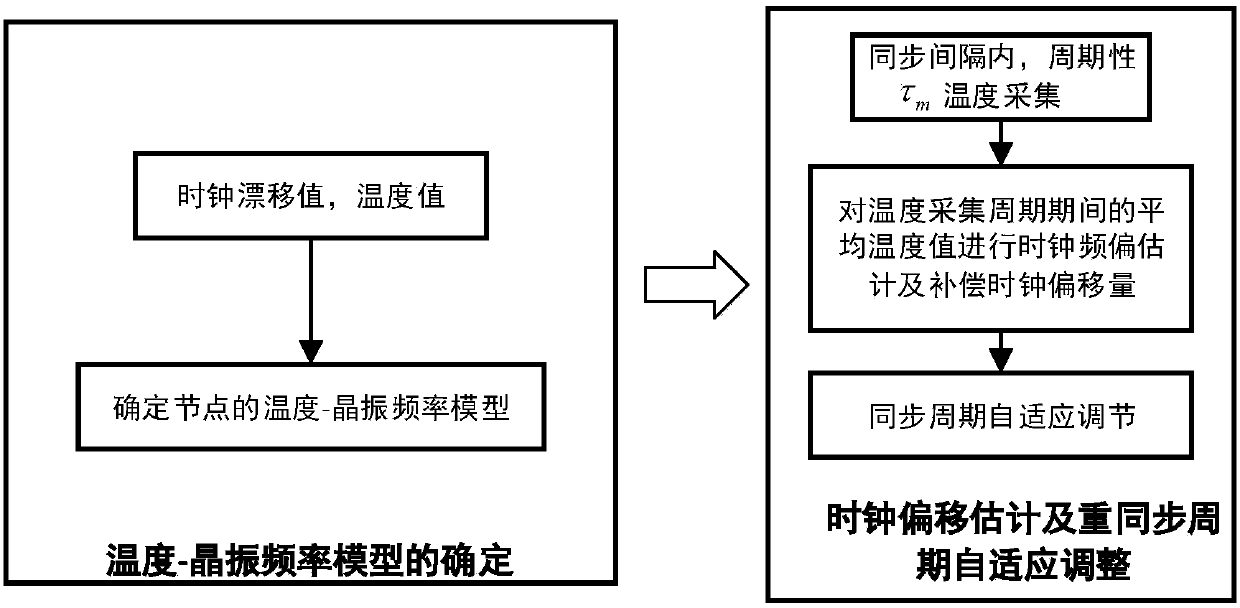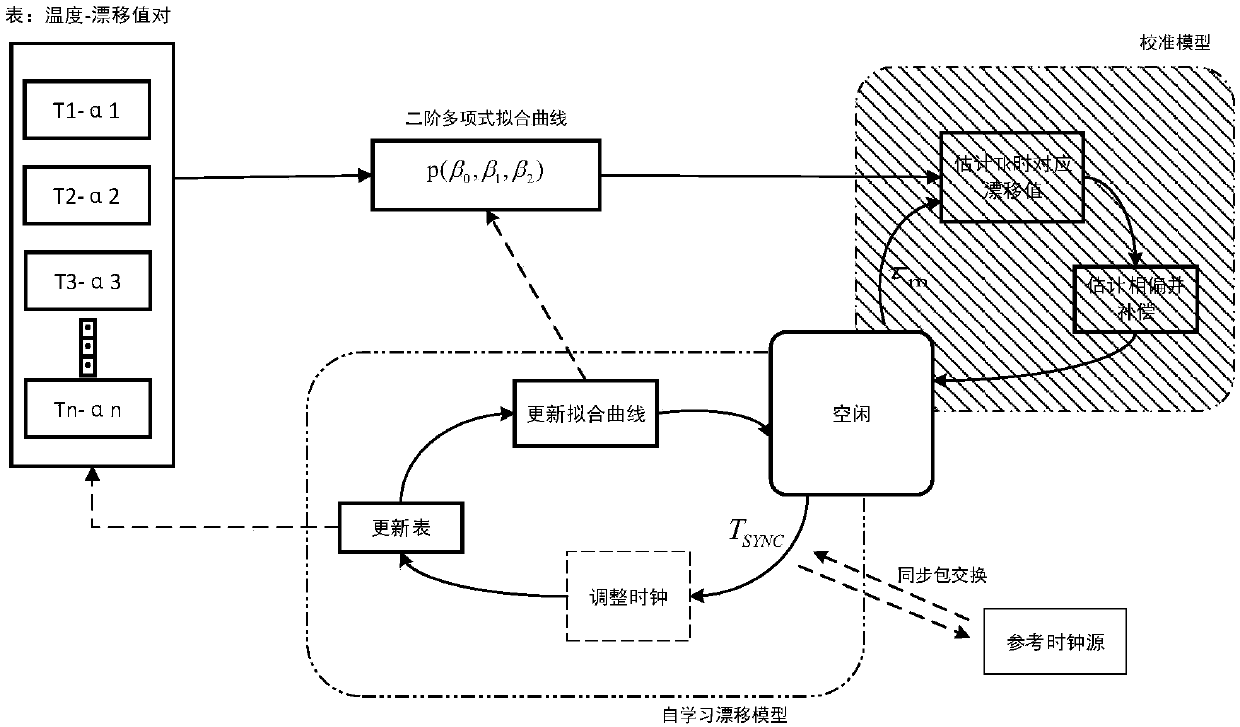Adaptive time synchronization method based on temperature compensation
A technology of time synchronization and temperature compensation, which is applied in the direction of synchronization, synchronization devices, clocks driven by synchronous motors, etc., can solve problems such as aging problems that have not been resolved, node clocks that cannot be timely, and sensor nodes that cannot meet the requirements of long-term operation. , to achieve good synchronization, improve energy efficiency, and improve performance
- Summary
- Abstract
- Description
- Claims
- Application Information
AI Technical Summary
Problems solved by technology
Method used
Image
Examples
Embodiment Construction
[0050] The preferred embodiments of the present invention will be described in detail below with reference to the accompanying drawings.
[0051] The overall frame diagram of the present invention is as figure 1 As shown, the transition of the system from the calibration state to the self-learning state and the least square linear fitting method in the present invention will be described in detail below in conjunction with the accompanying drawings.
[0052] In this embodiment, the temperature-crystal frequency model of a node is firstly described:
[0053] 1. Transition from a calibration state to a self-learning state
[0054] In order to improve the reliability of the mechanism, the present invention starts the device in the model with a pre-calibrated drift temperature model. The model is obtained from a subset of devices whose initial characterization is performed during fabrication.
[0055] The present invention proposes a method for smooth transition from pre-calibrat...
PUM
 Login to View More
Login to View More Abstract
Description
Claims
Application Information
 Login to View More
Login to View More - R&D
- Intellectual Property
- Life Sciences
- Materials
- Tech Scout
- Unparalleled Data Quality
- Higher Quality Content
- 60% Fewer Hallucinations
Browse by: Latest US Patents, China's latest patents, Technical Efficacy Thesaurus, Application Domain, Technology Topic, Popular Technical Reports.
© 2025 PatSnap. All rights reserved.Legal|Privacy policy|Modern Slavery Act Transparency Statement|Sitemap|About US| Contact US: help@patsnap.com



